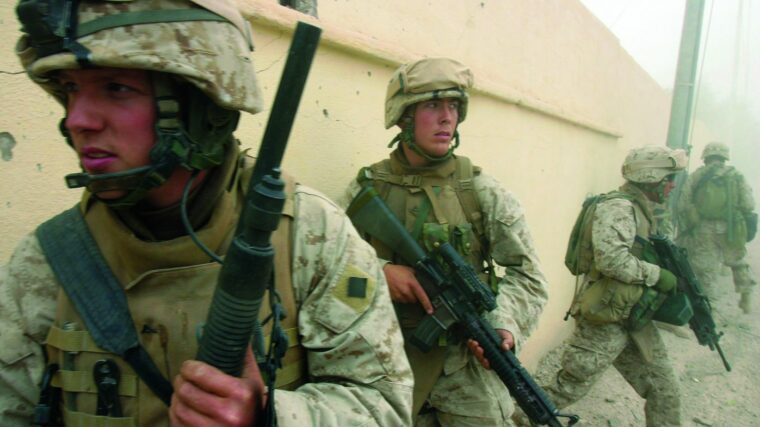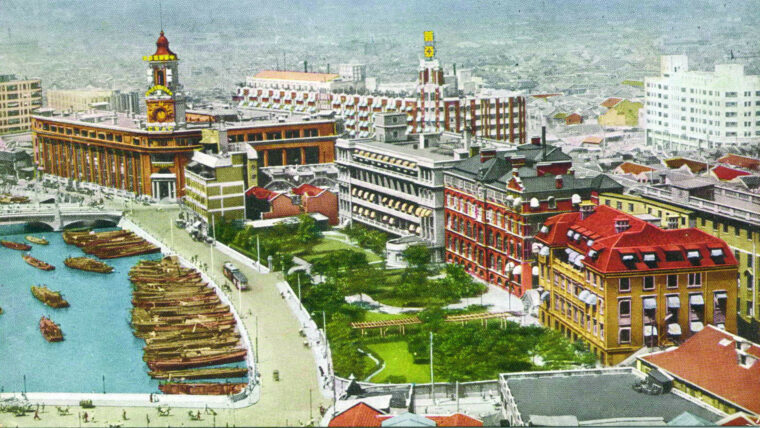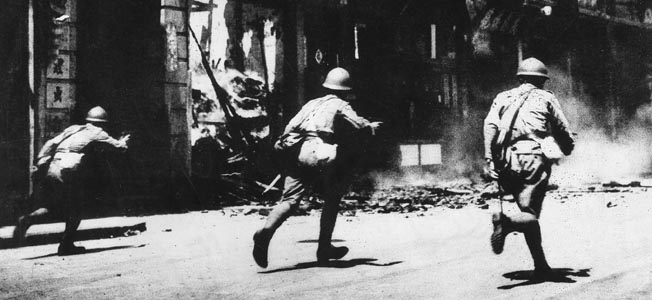
Japanese
Fog of War in the Aleutians
By Colonel James W. Hammond, Jr.For decades Americans have been spoiled by the instant coverage of war in the media. Read more

Japanese
For decades Americans have been spoiled by the instant coverage of war in the media. Read more

Japanese
Soochow was a mongrel dog with a remarkable gift for self-preservation. A homeless stray, he attached himself to some U.S. Read more

Japanese
Since the end of World War II, the aviation press has made the North American P-51 Mustang into the superstar Allied fighter of the war. Read more

Japanese
At 2:43 pm on October 24, 1944, one day before the Battle of Surigao Strait, Rear Admiral Jesse B. Read more

Japanese
British General Orde Wingate is one of the more enigmatic World War II commanders encountered in a number of biographical and military historical accounts. Read more

Japanese
Coming upon the enemy’s rear guard outside the western Kentucky village of Sacramento, four days after Christmas 1861, Confederate Colonel Nathan Bedford Forrest ordered his cavalry to advance. Read more

Japanese
No foreign army in the 5,000-year history of Japan had ever successfully conquered Japanese territory. In late 1944, American war planners were about to challenge that statistic on the tiny Pacific island of Iwo Jima. Read more

Japanese
On the chilly night of February 8, 1904, the Imperial Russian Navy’s Pacific Squadron lay peacefully at anchor just outside Port Arthur’s main harbor. Read more

Japanese
The concept of a ship that could submerge beneath the water and then resurface dates back as far as the late 1400s, when Italian Renaissance artist and inventor Leonardo da Vinci claimed to have found a method for a ship to remain submerged for a protracted period of time. Read more

Japanese
The year 1942 was one of crisis for the Allied cause in the Pacific. Until May, almost everything had gone in favor of Imperial Japan. Read more

Japanese
Within a week of the Los Baños raid, paratroopers from Burgess’s 1st Battalion moved back into the Los Baños area to occupy the region. Read more

Japanese
Chester Nez was born on January 23, 1921, in Chi Chil Tah, New Mexico to the Navajo “Black Sheep Clan.” This was a difficult time for the Navajo Nation, and tensions were tough between the U.S. Read more
Japanese
Mobile Army Surgical Hospitals, or M*A*S*H units, were popularized by Richard Hooker’s novel series, the 1970 film starring Donald Southerland and of course the long-running television show starring Alan Alda. Read more

Japanese
The moon like a tray was sinking in the western sea and the deep red sun showed its face to the east. Read more

Japanese
New Mexico and its capital of Santa Fe bring to mind some beautiful images. Stunning sunsets, unlimited vistas, a plethora of art galleries, the spectacular food enlivened with the local green chile, an ancient Native American culture that still thrives, and a Spanish heritage tradition going back to within 50 years of Columbus’s arrival all make for a unique cultural and physical environment. Read more

Japanese
On March 19, 1945, the Essex-class carrier USS Franklin (CV-13), dubbed “Big Ben,” lay 50 miles off Honshu, one of Japan’s Home Islands. Read more

Japanese
By the 1930s, Shanghai was already a legend in its own time––the most modern, populous, and decadent city in China. Read more

Japanese
In Western countries, “military police” are associated in the public mind with keeping order among off-duty personnel, such as arresting drunken servicemen. Read more

Japanese
At least ostensibly, World War I ended first with the cessation of armed hostilities between the warring powers at the famed “11th hour of the 11th day of the 11th month,” that is November 11, 1918. Read more

Japanese
When Maj. Gen. Curtis Lemay, the hard-driving commander of the Twentieth U.S. Air Force based in Guam, decided to change tactics in early 1945 to boost the effectiveness of the B-29 Superfortress, it was the Bell Aircraft plant in Marietta, Georgia, that ultimately provided him with the stripped-down bombers that played such a key role in ending the war in the Pacific. Read more